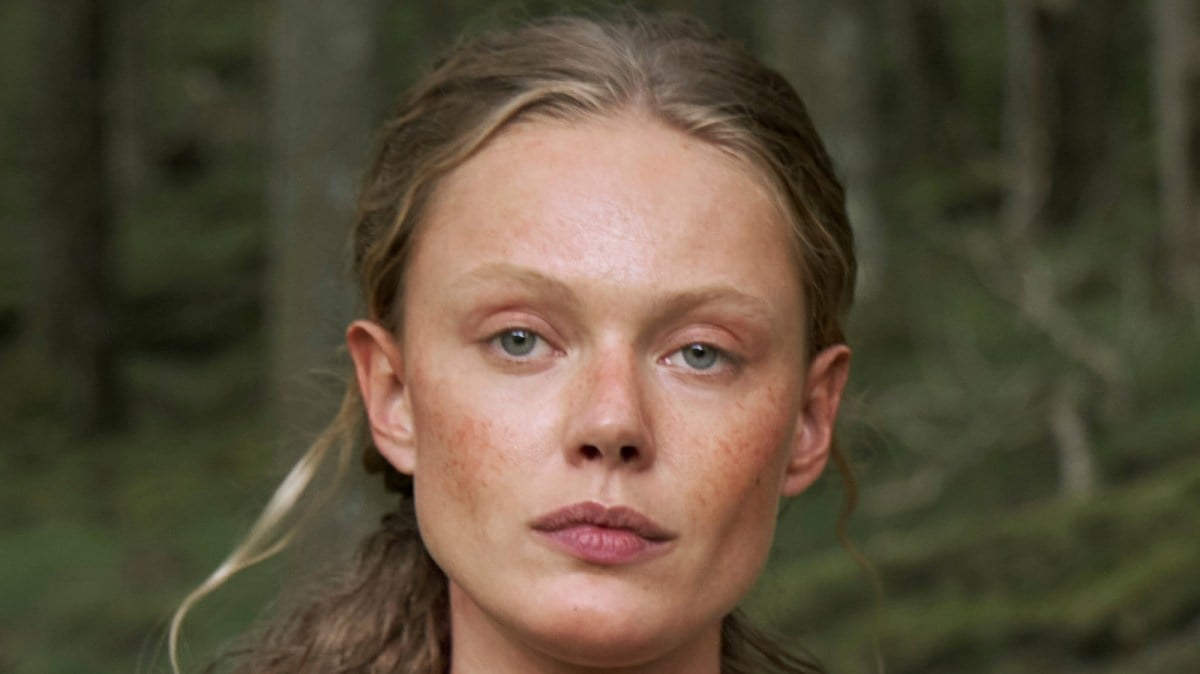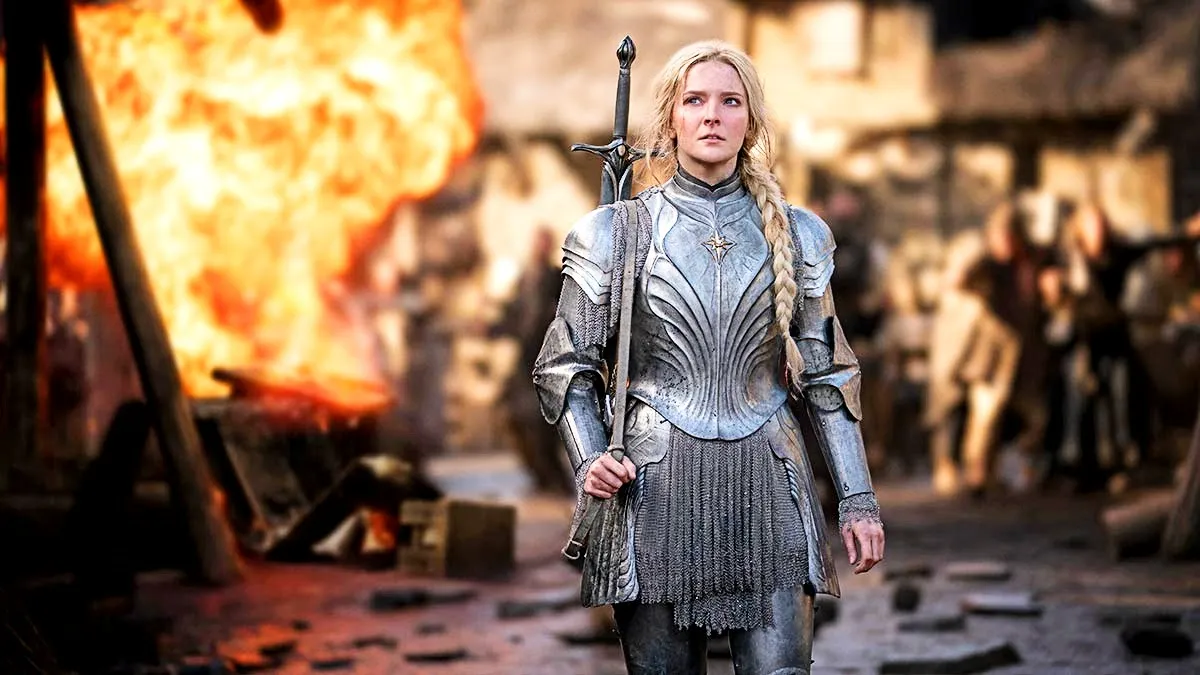(Contains spoilers for Vikings: Valhalla Season 1.)
If you’re a feminist and a fan of gory medieval dramas, then Vikings: Valhalla will be a treat. Set in the 12th century, a time of frequent bloody warfare between the English and the Norse, Vikings: Valhalla follows the exploits of Leif Erikson, Freydis Eriksdottir, Prince Harald Sigurdsson of Norway, and other characters, both Viking and English, as the Vikings seek revenge for the St. Brice’s Day Massacre. The best part of the show is the female characters, who are depicted as just as tough, smart, savvy, and complicated as the men.
Before we get into Freydis, Jarl Haakon, and the other badass women of Vikings: Valhalla, let’s dive into a little history. Archaeological evidence suggests that female Vikings isn’t just a modern plot device that makes for good TV—there actually were women warriors in ancient and medieval Scandinavia. For example, in the town of Birka, Sweden, human remains were found in a grave surrounded by a sword, arrows, an axe, a knife likely used for combat, and two shields. The body was clearly a warrior, and researchers assumed it belonged to a man until they analyzed its DNA and found that the warrior had actually been a woman. Norse lore contains stories of female warriors, but many assumed those stories were pure fiction until the Birka Viking was found.
What the Birka Viking demonstrates—and what Vikings: Valhalla embraces—is that the gender norms many people take for granted today, which dictate that women aren’t as strong or brave as men, aren’t even based on history, let alone immutable fact. In Valhalla, no one seems surprised or taken aback at the women who fight alongside their male counterparts, or serve in positions of high command. When Freydis says she hopes to join the Einherjar in Valhalla, Leif takes that as a perfectly normal aspiration.
Of course, Valhalla is a work of historical fiction, so it takes some liberties with the source material. (For instance, notice all those textiles everywhere? All the clothes, curtains, and ships’ sails? In reality, most women spent every single spare moment spinning the thread to weave that stuff. If you were walking to market, you’d spin on the way. Relaxing at the hearth? Pull out that spindle! Did you finish your chores four and a half seconds ago? Spinning time, baby!) Still, though, based on what we know about Scandinavian and British history, Valhalla‘s portrayal of women as leaders and warriors isn’t pure fantasy.
So let’s explore the women of Vikings: Valhalla in some more detail!
The Warriors: Freydis, the Greenlanders, and the Shield Maidens

When we first meet Freydis (Frida Gustavsson), she’s at the helm of the Greenlander’s tiny ship, screaming orders at her fellow sailors as they navigate a terrifying storm. Sprayed with seawater and buffeted by a howling gale, Freydis spots the fjord that signals that they’ve arrived at Kattegat after five grueling weeks at sea, and then ties herself to the mast to avoid getting swept overboard by a monstrous wave. When Liv, one of the rowers, is knocked onto the deck, Freydis grabs her to make sure she’s not swept overboard, either.
That’s Freydis in a nutshell: tough as nails and laser-focused on survival in a ferocious, unforgiving world. We soon learn, though, that she’s also out for justice. She and the other Greenlanders have come to Kattegat to seek out Gunnar, a Christian man who raped Freydis, carved a cross into her back, and then fled to Norway. Freydis spots him at the harbor when they arrive, but Leif tells her to wait, knowing that if she acts too soon, she’ll be killed. Freydis isn’t as concerned with that, though—after all, she aspires to a place in Valhalla—and when she encounters Gunnar again at Jarl Haakon’s feast, she carves a cross into his chest, killing him.
Throughout the show, though, we see that Freydis isn’t just a warrior. She has a rich spiritual life, too. Freydis regularly burns offerings to Odin and the other Norse gods, and when Jarl Haakon notices how devout Freydis is, she suggests that Freydis make a pilgrimage to the holy city of Uppsala, the site of a temple to Odin, Freya, and Thor. At the temple, one of the priestesses spots Freydis in the crowd and sees something special in her, inviting her to go on a vision quest that reveals that she’s “the Last”—although we still don’t know exactly what that means.
What’s really interesting about Freydis is that she shows how tightly spirituality is tied up with warriorhood in the show. After she returns from Uppsala, Freydis joins Jarl Haakon’s shield maidens, which the show refers to as a “holy order.” Being a shield maiden isn’t just a way of protecting the Jarl and Kattegat. It’s a way of serving the gods.
Of course, Freydis is far from the only warrior woman in the show. The other Greenlanders, Liv and Yrsa, fight alongside her, and Liv believes in Valhalla just as fervently as Freydis does. And Freydis’s initiation into the Shield Maidens, during which she has to fight them all off as the people of Kattegat look on and cheer, shows how ruthless they are. These women are as battle-hardened as any man.
The Queens: Jarl Haakon, Queen Emma, and Queen Aelfgifu

Throughout season 1, Jarl Haakon (Caroline Henderson), ruler of Kattegat, proves herself to be a compassionate and benevolent leader. She refuses to privilege one belief system over another, and makes sure Kattegat is welcoming to both pagans and Christians. Even when Jarl Kare gives her an ultimatum—perform a mass conversion or have her people slaughtered—she refuses. Plurality and tolerance are at the core of her ruling style.
Maybe Jarl Haakon embraces religious tolerance because it’s a smart leadership strategy. Or maybe she viscerally understands why it doesn’t pay to be insular. As she shows Freydis around Kattegat, Freydis asks why she doesn’t feel threatened by Christianity, and Haakon explains that she herself is a result of the Vikings’ wide-ranging travels, with her grandmother having come from a “great African family” in Alexandria. “Anything is possible when our minds are open,” she says.
It’s easy to be magnanimous when your people love you and your rule is unquestioned, but Emma and Aelfgifu don’t have that luxury. Emma (Laura Berlin) is King Aethelred’s second wife and the stepmother of Edmund, heir to the throne. Emma comes from Normandy, making her position in England highly precarious when Aethelred dies. She’s obviously a skilled commander, taking charge when it’s clear the Vikings are going to attack, but Edmund doesn’t listen to her advice. After he helps the Vikings bring down London Bridge by taking their bait, she finds herself a hostage. Emma’s forced to maneuver behind the scenes to keep herself and her sons alive.
Meanwhile, Aelfgifu (Pollyanna McIntosh) isn’t pleased when she finds out that Canute has declared himself King of England and left her behind in Norway. She comes up with an ingenious plan to force her way back into power: she hides Canute’s fleet and tells them to attack England if they don’t hear from her by a certain time.
Emma can seem cold at times, and Aelfgifu plays downright dirty, but the show makes it clear that despite their jewels and rich brocaded gowns, they’re both literally trying to keep themselves and their children alive. What happens to Emma if she can’t make herself useful? What happens to Aelfgifu if the men in power decide to annul her marriage to Canute? They’re both thrown into a den of wolves with only their wits to protect them. The situation comes to a head when they scheme against each other at the end of the show, and it honestly feels like a shame that circumstances force them to be enemies. Imagine what they could get up to if they were allies.
The Others: Healers, Priestesses, and Bards

Along with the main characters, Vikings: Valhalla is full of fascinating women in smaller roles. The priestess at the Temple of Odin in Uppsala is unforgettable for her costume alone! Other women act as bards, encouraging warriors to tell stories about their exploits, and serve various other spiritual functions, from selling wooden offerings at the Kattegat market to performing human sacrifice in preparation for battle.
My favorite bit character is the healer who takes care of Yrsa while Freydis continues to Uppsala after being attacked by Jarl Kore’s men. It’s true that we never see much of her, and her character doesn’t exactly have a lot of depth. She’s just taking care of her baby in her picturesque cottage full of drying herbs when Freydis and Yrsa show up, and after that, she plays the role of a gentle but firm healer. Maybe it’s all the attention to detail that the show puts into her brief appearance: her bright headscarf, the tattoos on her arms, that amazingly witchy cottage. So what if she’s kind of a stereotype? I love her.
Even in 2022, you still occasionally hear people complaining that it’s just too much work to write compelling female characters, or that historical dramas can’t have women or people of color in positions of authority because “it’s not historically accurate.” (This is utter nonsense.) Hopefully, media like Vikings: Valhalla continue to prove the naysayers wrong.
All eight episodes of Vikings: Valhalla season 1 are now streaming on Netflix, with at least two more seasons to come!
(images: Netflix)










Published: Mar 3, 2022 10:59 am